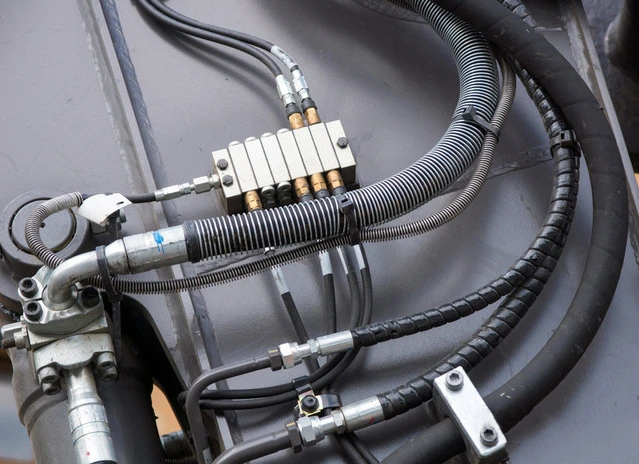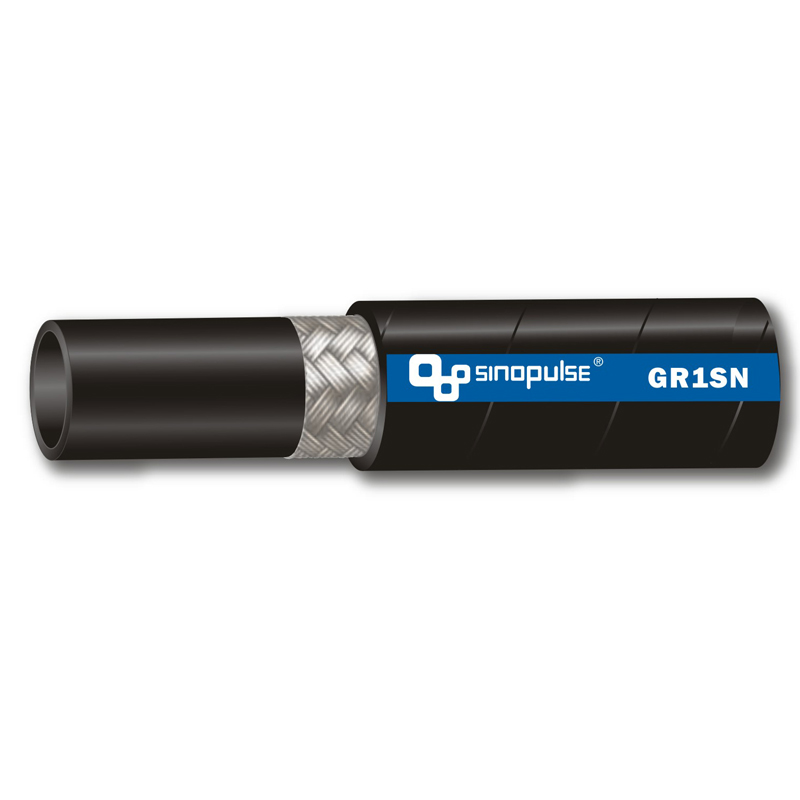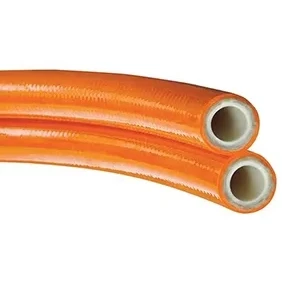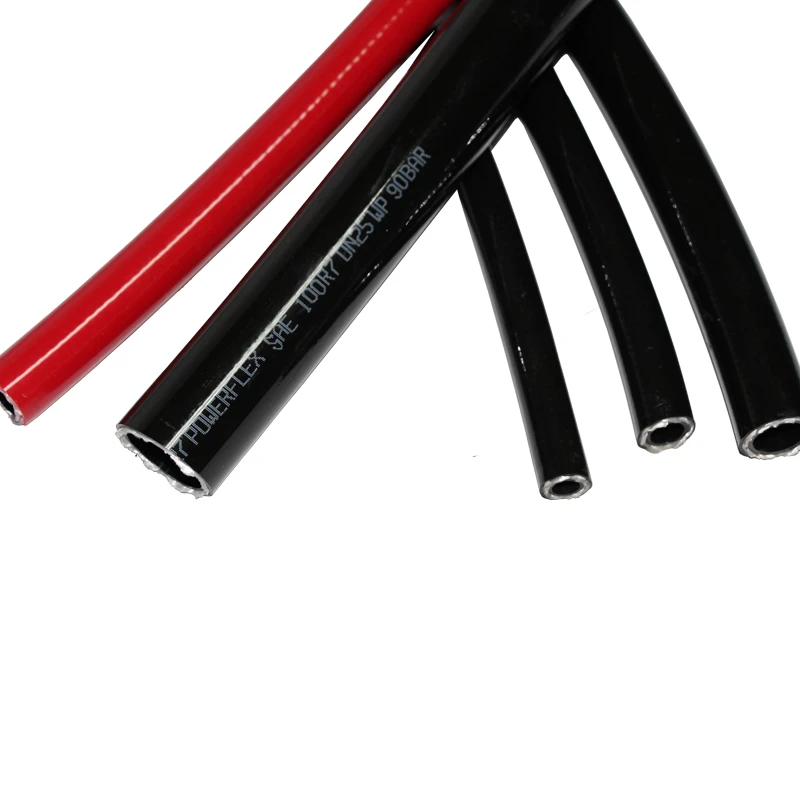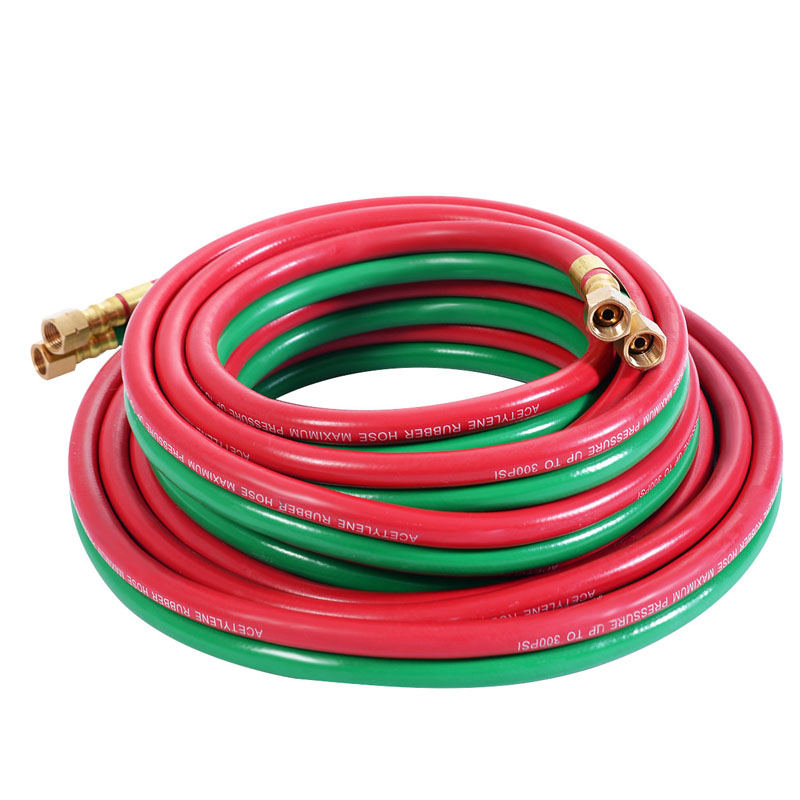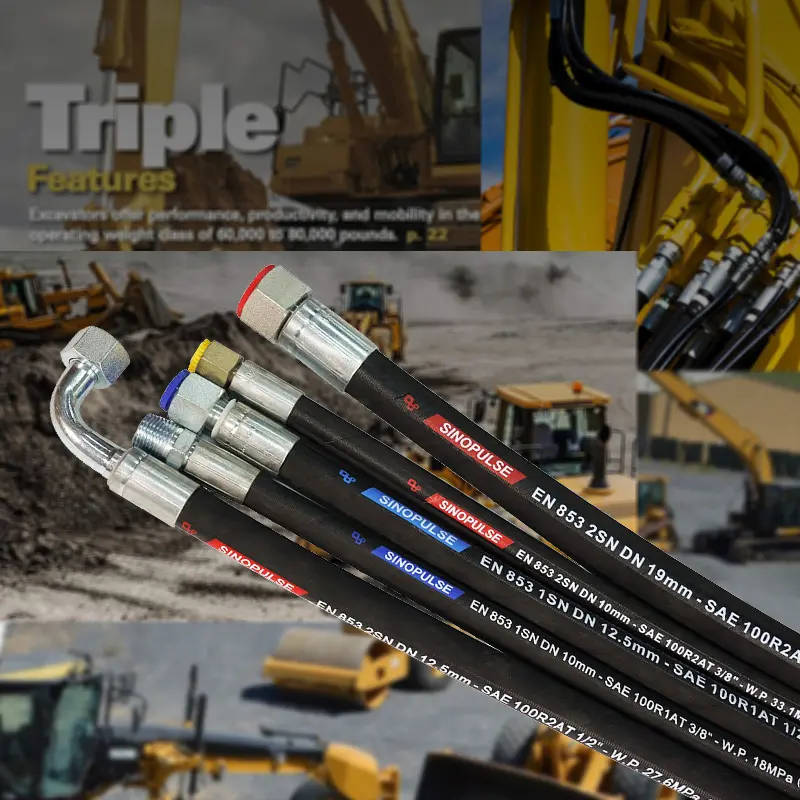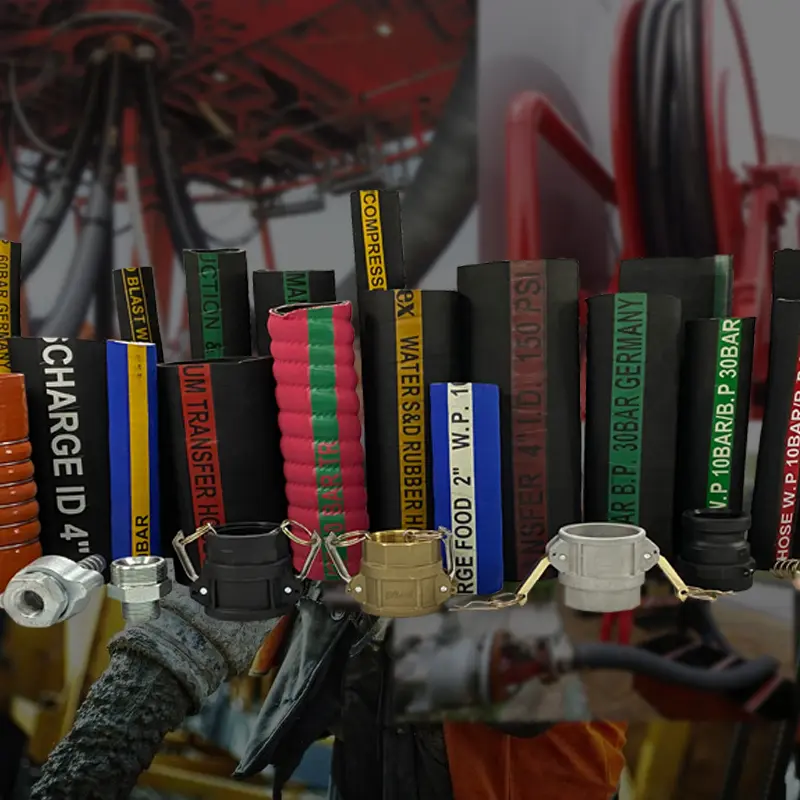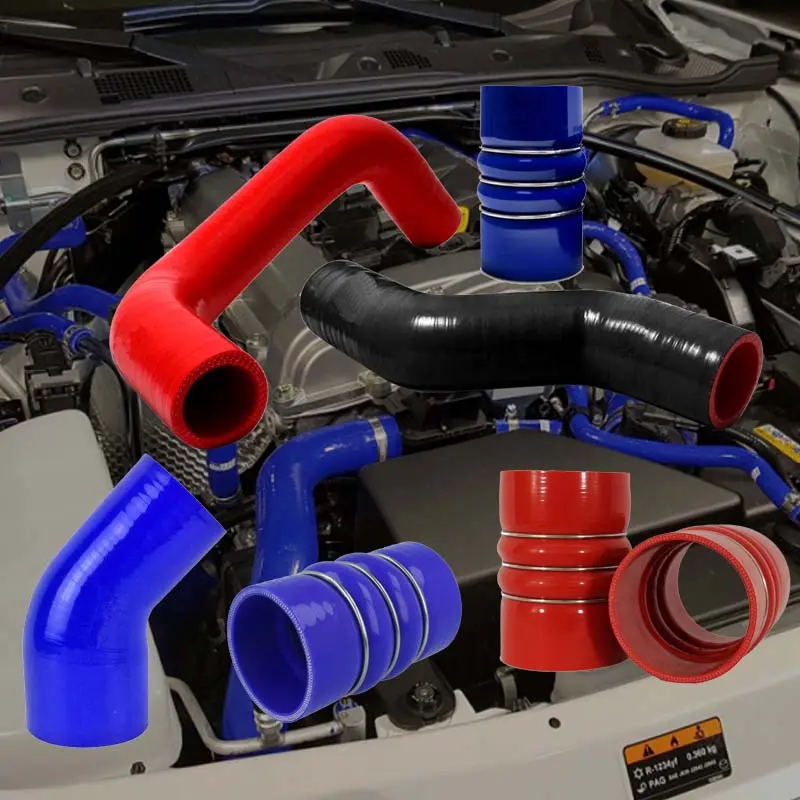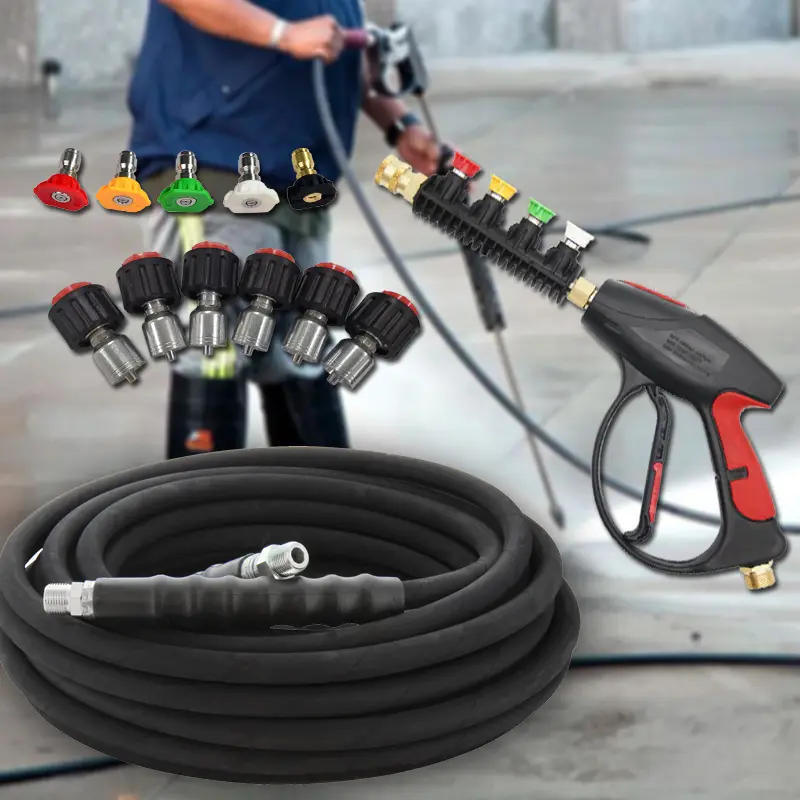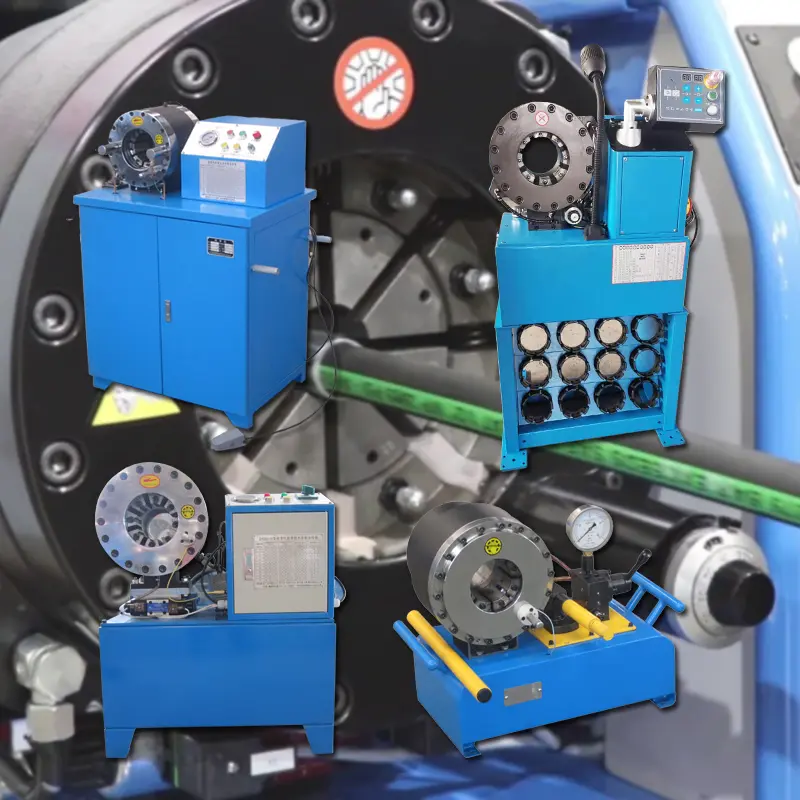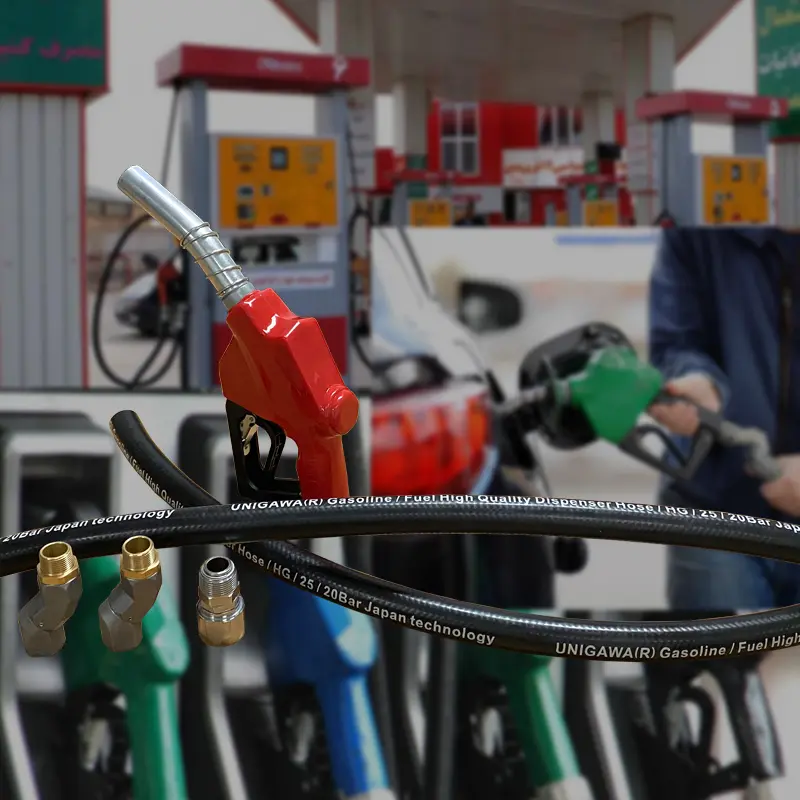The Evolving Landscape of High-Pressure Hydraulics and the Emergence of R13 hose
In the demanding world of industrial and heavy-duty machinery, the integrity and reliability of hydraulic systems are paramount. These systems are the lifeblood of operations ranging from colossal mining excavators to intricate deep-sea drilling rigs, where failure is not merely an inconvenience but a catastrophic event with significant financial and safety implications. The incessant drive for greater efficiency, higher power density, and reduced operational downtime has pushed the boundaries of hydraulic component design, particularly for the conduits that transmit immense fluid power. This evolution has led to a critical focus on advanced hydraulic hoses capable of withstanding extreme pressures, fluctuating temperatures, and abrasive environments. Among these, the R13 hose, specifically the SAE100 R13 Multiple Steel Wire Spiral Hydraulic Hose, stands as a testament to engineering excellence in high-pressure fluid conveyance. Its robust construction and superior performance characteristics make it an indispensable component in modern hydraulic architectures, where traditional hoses often fall short. The global market for hydraulic hoses is projected to grow significantly, driven by an expanding industrial base, particularly in heavy machinery, construction, agriculture, and material handling, alongside increasing automation across manufacturing sectors. This growth underscores the escalating demand for high-performance solutions like the hydraulic hose R13, which is designed to meet and exceed the rigorous operational demands of these industries. The trend is clearly moving towards hoses that offer not just higher pressure ratings but also extended service life, improved flexibility, and enhanced resistance to a wider range of aggressive media and environmental stressors, directly addressing the total cost of ownership (TCO) concerns for industrial operators. The design and material science behind the SAE100 R13 hose embody these advancements, offering a competitive edge in applications where system uptime and safety are non-negotiable. Its multi-spiral wire reinforcement distinguishes it from lower-pressure counterparts, enabling it to handle burst pressures often exceeding 10,000 PSI and working pressures up to 5,000 PSI, depending on the specific diameter. This capacity for extreme pressure, combined with excellent impulse resistance, is what positions the R13 hose as a leading choice for the most critical hydraulic circuits. Understanding its technical nuances, application versatility, and the manufacturing precision required for its production is crucial for any discerning professional in the hydraulic industry seeking to optimize system performance and reliability.
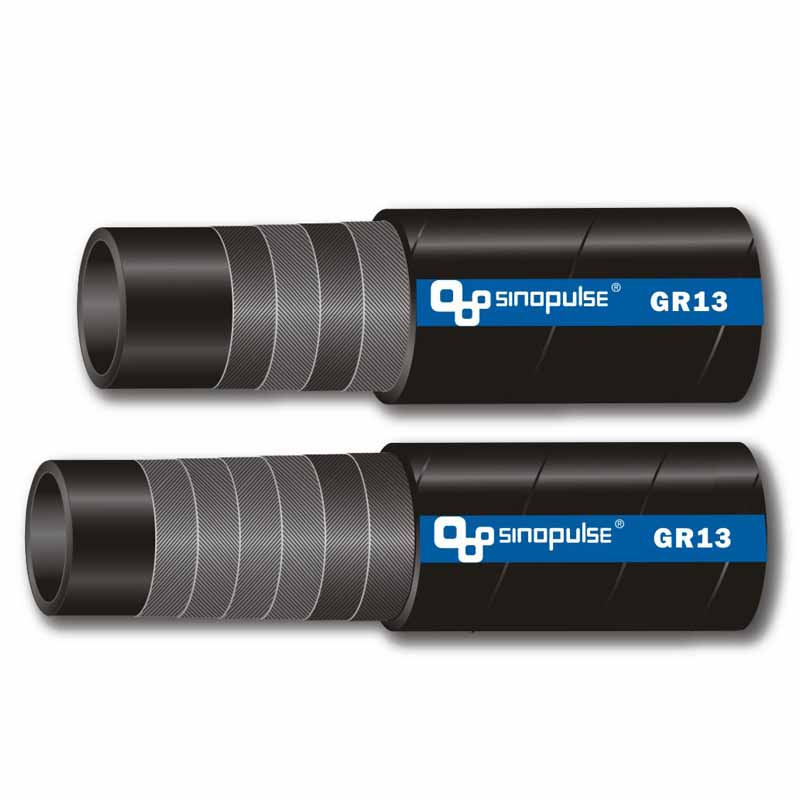
Unpacking the Advanced Engineering of SAE100 R13 Multiple Steel Wire Spiral Hydraulic Hose
Core Material Composition and Design Principles
The superior performance of the SAE100 R13 hose is fundamentally rooted in its meticulously engineered construction, adhering strictly to the SAE J517 standard, which sets forth comprehensive requirements for various types of hydraulic hoses. At its core, an R13 hose typically comprises three primary layers: an inner tube, multiple spiral layers of high-tensile steel wire reinforcement, and an outer cover. The inner tube, which is in direct contact with the hydraulic fluid, is crafted from a high-quality synthetic rubber compound, often Nitrile Butadiene Rubber (NBR) or a similar oil-resistant elastomer. This choice of material is critical for ensuring chemical compatibility with a wide array of hydraulic fluids, including petroleum-based, water-glycol, and some synthetic fluids, while also providing excellent resistance to heat aging and abrasion from fluid flow. The seamless extrusion of this inner layer is essential to prevent leakage and maintain consistent fluid dynamics. The reinforcing layers are what truly set the R13 hose apart. Unlike braided hoses, which use woven wire, R13 hoses utilize multiple (typically four or six) spiraled layers of high-tensile steel wire. Each layer is wound in an opposing direction to the previous one, creating a highly stable and exceptionally strong structure capable of resisting enormous internal pressures while minimizing volumetric expansion. This spiral design distributes pressure forces more evenly across the hose wall and offers superior fatigue resistance under impulse conditions compared to braided designs. The steel wire itself is often brass-coated to enhance adhesion to the rubber compounds. Finally, the outer cover is also made from a synthetic rubber, such as Neoprene or a durable synthetic rubber blend, engineered for maximum resistance to external factors. This cover protects the reinforcement layers from abrasion, ozone, UV radiation, weathering, and various industrial chemicals, ensuring the hose's longevity in harsh operating environments. The selection of materials and their precise integration through advanced manufacturing processes dictate the hose's ultimate performance envelope, including its flexibility, weight, bend radius, and overall service life. The composite nature of the hydraulic hose R13 ensures it can reliably operate within a wide temperature range, typically from -40°C to +121°C (-40°F to +250°F), accommodating diverse climatic and operational thermal demands. This careful design ensures that the R13 hose maintains its structural integrity and performance characteristics even when subjected to continuous high-pressure cycles, making it suitable for applications requiring exceptional durability and safety.
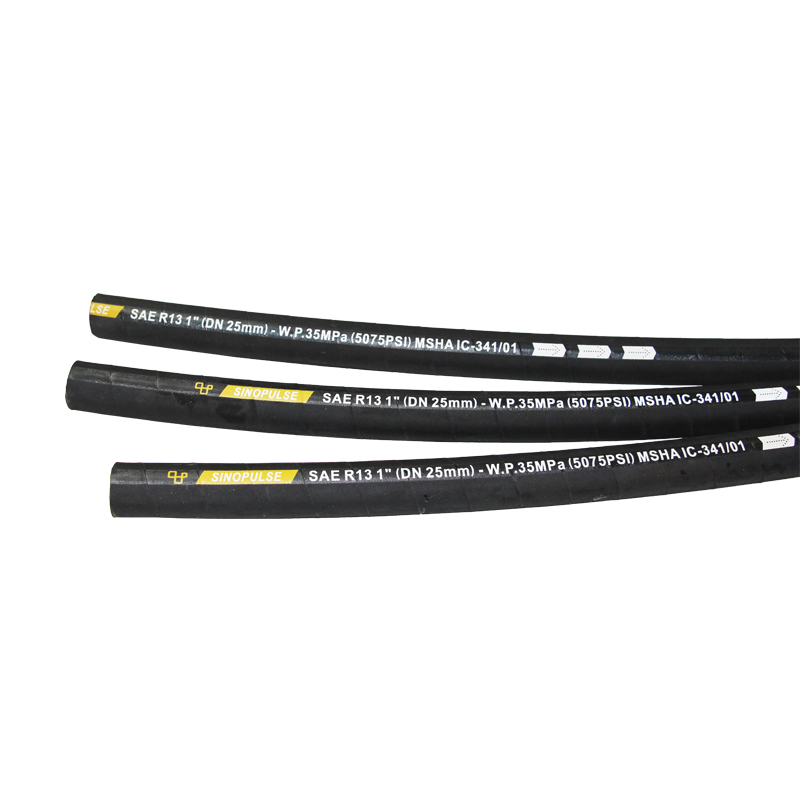
Key Performance Parameters and Standards Compliance
Adherence to international standards is a cornerstone of reliability for high-pressure hydraulic components. The SAE100 R13 standard, defined by the Society of Automotive Engineers (SAE) J517 specification, is globally recognized for high-pressure, severe-duty hydraulic applications. This standard specifies critical performance characteristics that an R13 hose must meet, including working pressure, burst pressure, impulse cycle life, minimum bend radius, and operating temperature range. Working pressure for an R13 hose typically ranges from 3,000 PSI to 5,000 PSI (20.7 MPa to 34.5 MPa), depending on the nominal hose ID, providing a substantial safety margin for most heavy-duty applications. The burst pressure, a critical safety parameter, is typically four times the working pressure, ensuring that the hose can withstand significant pressure spikes without catastrophic failure. Furthermore, the SAE J517 standard mandates a minimum impulse cycle life, often exceeding 500,000 or even 1,000,000 cycles, at pressures significantly above the rated working pressure. This rigorous testing simulates the pulsating pressures common in real-world hydraulic systems, guaranteeing long-term durability and fatigue resistance. An R13 hose must also demonstrate excellent volumetric expansion control under pressure, ensuring system responsiveness and efficiency. Manufacturers often conduct internal tests exceeding these minimums to further validate product quality and enhance user confidence. Compliance with additional certifications such as ISO 18752 (Classification of hydraulic hose according to their working pressure and minimum bend radius) or specific certifications like MSHA (Mine Safety and Health Administration) for flame resistance, further enhances the credibility and applicability of the hydraulic hose R13 in specialized environments. Below is a representative table showcasing typical parameters for SAE100 R13 hoses, highlighting the robust specifications that underscore their suitability for extreme pressure hydraulic systems. These parameters are not merely numbers; they represent the culmination of extensive material science research, precision manufacturing, and stringent quality control, all aimed at delivering a product that consistently performs under duress and contributes to the overall safety and efficiency of hydraulic machinery. The ability of the R13 hose to maintain integrity across a broad spectrum of temperatures, combined with its high pressure and impulse resistance, makes it an optimal choice for operations where system reliability is paramount, mitigating the risks of downtime and costly repairs.
| Hose ID (Inches/mm) | Working Pressure (PSI/MPa) | Burst Pressure (PSI/MPa) | Min. Bend Radius (Inches/mm) | Approx. Weight (kg/m) | Impulse Cycles (min.) |
|---|---|---|---|---|---|
| 0.75" / 19mm | 5000 / 34.5 | 20000 / 138.0 | 9.5 / 240 | 1.5 - 2.0 | 500,000 |
| 1.00" / 25mm | 4000 / 27.6 | 16000 / 110.4 | 12.0 / 305 | 2.2 - 2.8 | 500,000 |
| 1.25" / 31.5mm | 3500 / 24.1 | 14000 / 96.6 | 16.0 / 405 | 3.5 - 4.2 | 500,000 |
| 1.50" / 38mm | 3000 / 20.7 | 12000 / 82.8 | 20.0 / 510 | 4.5 - 5.5 | 500,000 |
| 2.00" / 51mm | 2500 / 17.2 | 10000 / 69.0 | 25.0 / 635 | 6.0 - 7.5 | 500,000 |
Precision Manufacturing: The Journey of an SAE100 R13 Hose from Raw Material to High-Performance Component
Raw Material Sourcing and Preparation
The production of a high-quality R13 hose begins long before the actual assembly, with the meticulous sourcing and preparation of raw materials. This foundational step is critical for ensuring the final product’s integrity and performance. The primary raw materials include various synthetic rubber compounds, high-tensile steel wire, and specialized bonding agents. For the inner tube and outer cover, rubber compounds like NBR (Nitrile Butadiene Rubber) for the inner layer and EPDM (Ethylene Propylene Diene Monomer) or synthetic rubber blends for the outer cover are selected based on their specific properties—oil resistance, heat resistance, abrasion resistance, and weathering capabilities. These raw elastomers arrive in large bales and undergo rigorous quality checks to confirm their chemical composition, purity, and physical properties (e.g., hardness, tensile strength, elasticity) meet stringent internal and industry standards (e.g., ASTM D2000 for rubber products). They are then mixed with various additives, including vulcanizing agents, accelerators, activators, fillers (like carbon black for reinforcement and UV protection), plasticizers, and anti-degradants, in precise proportions using internal mixers or two-roll mills. This compounding process is crucial for achieving the desired physical and chemical characteristics of the rubber, such as flexibility, durability, and resistance to degradation. The high-tensile steel wire, which forms the core strength of the hydraulic hose R13, is another critical component. This wire is typically made from high-carbon steel, chosen for its exceptional tensile strength. It undergoes a brass-coating process to enhance its adhesion to the rubber, ensuring a strong bond between the layers during vulcanization. Incoming wire reels are inspected for consistent diameter, tensile strength, and freedom from defects. Quality control at this initial stage prevents downstream manufacturing issues and ensures the final R13 hose meets its specified pressure ratings and service life expectations. The commitment to using only premium, thoroughly inspected raw materials is a hallmark of manufacturers dedicated to producing high-performance and reliable R13 hose products, directly contributing to the hose's ability to withstand extreme operating conditions and provide an extended service life in critical applications across industries.
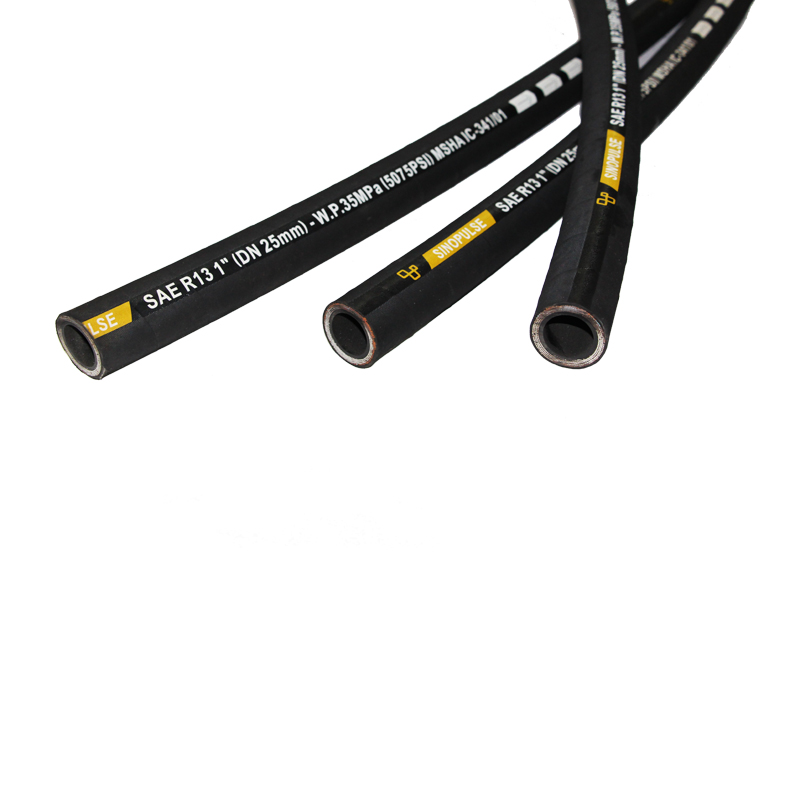
Multi-Stage Production Process
The manufacturing of the SAE100 R13 Multiple Steel Wire Spiral Hydraulic Hose is a complex, multi-stage process that demands precision engineering and advanced machinery. The journey begins with the inner tube extrusion: the compounded rubber is fed into an extruder, which forces the molten material through a die to form a continuous, seamless tube of precise diameter and wall thickness. This tube is then cooled and spooled, forming the foundation of the R13 hose. Following extrusion, the critical reinforcement phase begins. The spiraling process is executed on specialized winding machines, where multiple layers of high-tensile steel wire are wound around the inner tube in alternating directions. For an R13 hose, typically four to six layers are applied, each under precise tension to ensure optimal structural integrity and pressure containment. Between each wire layer, a thin layer of adhesion rubber is applied to bond the steel wire to the adjacent rubber layers, preventing delamination under dynamic pressure cycles. This meticulous layering is what provides the exceptional strength and impulse resistance characteristic of the hydraulic hose R13. After the reinforcement layers are applied, the outer cover is extruded over the entire assembly. This protective layer is designed to shield the internal components from external damage, including abrasion, ozone, UV radiation, and chemical exposure. Once the outer cover is applied, the hose enters the vulcanization stage. This is a crucial chemical process where the rubber compounds are cured under heat and pressure, transforming them from a plastic state into an elastic, durable material. Vulcanization typically occurs in steam autoclaves or continuous vulcanization lines, ensuring that the rubber cross-links effectively, providing the hose with its final mechanical properties, including elasticity, tensile strength, and resistance to heat and chemicals. The precise control of temperature and curing time during vulcanization is paramount to achieving the desired performance characteristics of the R13 hose. Each stage of this process is subject to continuous monitoring and control to maintain tight tolerances and ensure product consistency. The combination of high-quality materials and sophisticated manufacturing techniques ensures that each length of hydraulic hose R13 can reliably perform in the most demanding high-pressure applications for its designed service life, minimizing the risk of premature failure and maximizing operational uptime for end-users.
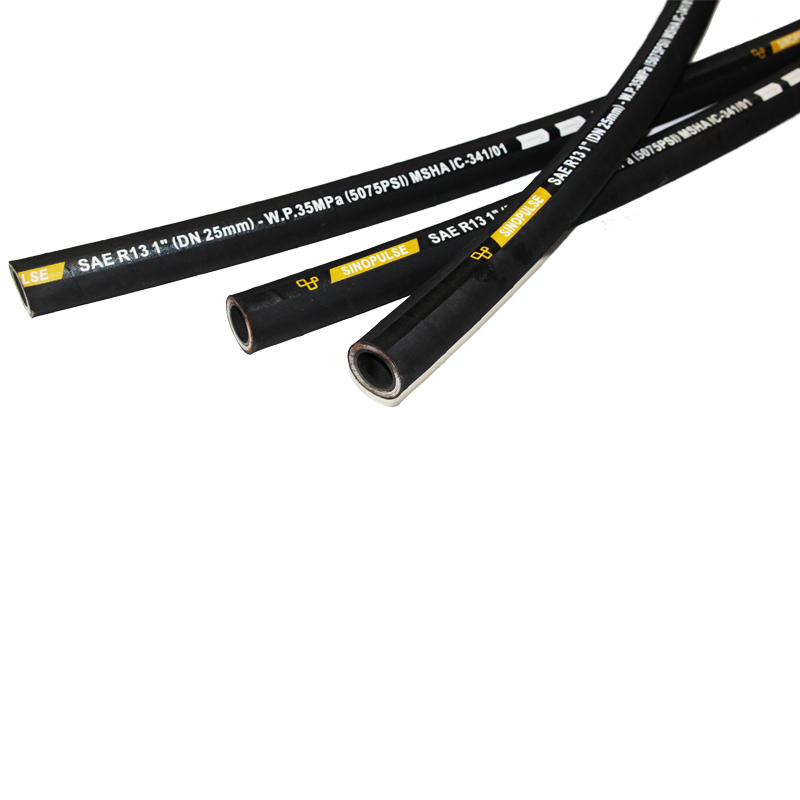
Rigorous Quality Control and Testing Protocols
Quality control is not merely a final inspection but an integrated, continuous process throughout the manufacturing of an R13 hose, ensuring every segment meets the stringent performance and safety standards required by SAE100 R13. This meticulous approach begins with incoming raw material inspection, covering everything from rubber compound consistency to steel wire tensile strength and adhesion properties. During the extrusion of the inner tube and outer cover, continuous laser gauges monitor wall thickness and concentricity, detecting deviations instantly. After the spiraling process, visual inspections are performed to check for proper wire spacing, tension, and any potential defects in the reinforcement layers. The most critical testing occurs after vulcanization, where the finished R13 hose undergoes a battery of comprehensive tests. The hydrostatic proof test is fundamental: each hose length is pressurized to two times its maximum working pressure (2W.P.) for a specified duration, checking for leaks, weeping, or structural deformation. Burst pressure tests are performed on samples to ensure they exceed the minimum burst pressure (typically 4W.P.), validating the hose’s safety margin. Impulse testing is perhaps the most demanding, subjecting hose samples to hundreds of thousands or even a million cycles of rapid pressure fluctuations at temperatures well above ambient. This simulates real-world operating conditions and assesses the hose's fatigue resistance and long-term durability. For the hydraulic hose R13, meeting or exceeding 500,000 impulse cycles is a minimum requirement, and many high-quality manufacturers aim for 1,000,000 cycles or more. Other critical tests include dimensional checks (inner and outer diameter, length, ovality), bend radius testing to confirm flexibility without kinking or structural damage, adhesion tests between layers, and resistance to environmental factors such as ozone, abrasion, and oil immersion. Specific applications may also require flame resistance tests (e.g., MSHA), electrical conductivity tests, or low-temperature flexibility tests. All testing equipment is regularly calibrated to maintain accuracy, and detailed records are kept for traceability. This comprehensive testing regime, in strict adherence to international standards like ISO 1436 or SAE J517, provides unwavering assurance of the R13 hose's exceptional quality, reliability, and suitability for the most critical high-pressure hydraulic applications, contributing directly to the safety and operational efficiency of heavy machinery and industrial systems worldwide. This commitment to rigorous quality control is what distinguishes reliable suppliers in the market, ensuring that every hydraulic hose R13 delivered will perform as expected under extreme conditions.
Strategic Deployment: Where SAE100 R13 Hoses Deliver Unmatched Performance
Critical Applications Across Diverse Industries
The robust design and exceptional performance parameters of the SAE100 R13 hose make it the preferred choice for a wide array of high-pressure, heavy-duty applications across numerous industries where hydraulic power is essential and reliability is non-negotiable. In the construction industry, R13 hoses are integral to the operation of large excavators, bulldozers, concrete pumps, pile drivers, and cranes, enabling the precise movement and powerful actuation of their hydraulic cylinders and attachments. Their ability to withstand high impulse pressures and abrasive environmental conditions on job sites ensures sustained performance and minimizes downtime, a critical factor in project timelines. The mining sector represents another major application area, where equipment such as continuous miners, longwall shearers, jumbo drills, and massive haul trucks operate under immense loads and often in extreme temperatures and abrasive atmospheres. The hydraulic hose R13 provides the necessary resilience against high internal pressures and external wear, ensuring safety and operational continuity in subterranean and open-pit mining operations. The petrochemical and oil & gas industries utilize R13 hoses in drilling rigs, offshore platforms, hydraulic fracturing equipment, and refinery processes where high-pressure fluid transfer, often involving flammable or corrosive media, is routine. The hose's superior chemical compatibility and resistance to high temperatures are crucial here for both safety and efficiency. In heavy manufacturing and metallurgy, R13 hoses are found in large presses, foundries, and steel mills, handling the extreme forces required for metal forming, casting, and material handling systems. The hose’s durability ensures it can withstand continuous operation in environments characterized by high heat and potential exposure to molten metal splashes. Furthermore, waste management and recycling machinery, such as balers and compactors, rely on high-pressure hydraulic systems, where R13 hoses provide the consistent power needed for heavy compression tasks. The marine and offshore industries also heavily depend on R13 hoses for ship steering gear, winches, deck machinery, and subsea hydraulic systems due to their excellent resistance to saltwater corrosion and extreme pressures. The widespread adoption of the R13 hose across these diverse and demanding sectors underscores its proven track record and indispensable role in maintaining the operational integrity and safety of critical hydraulic systems globally. Its reliability directly contributes to the reduction of costly maintenance and unexpected breakdowns, enhancing overall productivity and profitability for industrial operators.
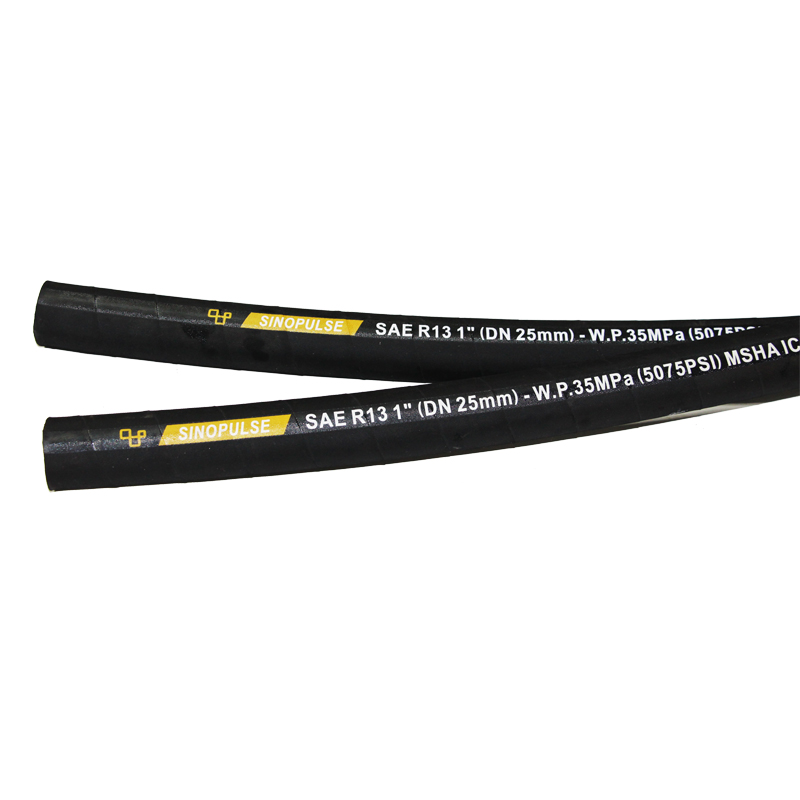
Tangible Advantages in Demanding Environments
The deployment of SAE100 R13 hoses in demanding environments offers a multitude of tangible advantages that translate directly into operational efficiencies, enhanced safety, and reduced total cost of ownership (TCO). A primary advantage is their superior pressure resistance. Engineered with multiple layers of spiraled high-tensile steel wire, these hoses can sustain continuous working pressures up to 5,000 PSI and absorb extreme pressure spikes that would cause conventional hoses to fail. This capability is vital in heavy machinery where sudden load changes or system surges are common, preventing costly bursts and fluid leaks. Secondly, their exceptional impulse cycle life means they can endure hundreds of thousands to over a million rapid pressure fluctuations without degradation, significantly extending the service interval and reducing the frequency of hose replacements. This directly impacts maintenance costs and machine uptime, making the R13 hose a more economical choice in the long run. Thirdly, enhanced abrasion and weather resistance are crucial for outdoor and industrial applications. The robust synthetic rubber outer cover provides formidable protection against physical wear, UV radiation, ozone, and harsh weather conditions, preventing premature aging and external damage. This resistance is particularly beneficial in construction and mining, where hoses are exposed to rough surfaces and environmental extremes. Furthermore, the carefully selected inner tube materials provide excellent chemical compatibility with a wide range of hydraulic fluids, including those with aggressive additives or high temperatures. This prevents material degradation, swelling, or hardening of the inner bore, which could lead to internal fluid contamination or flow restrictions. From an operational standpoint, the consistent performance across a broad temperature range (typically -40°C to +121°C) ensures reliable operation in diverse climates, from freezing Arctic conditions to scorching desert environments, without significant loss of flexibility or pressure capacity. The optimized bend radius for a hose of its pressure rating, while still significant, allows for more flexible routing within complex machinery without compromising structural integrity or flow dynamics. By minimizing volumetric expansion under pressure, hydraulic hose R13 also contributes to improved system responsiveness and energy efficiency, as less energy is wasted in deforming the hose wall and more is directly translated into hydraulic power. Lastly, the inherent safety factor of the R13 hose (typically a 4:1 safety ratio for burst pressure to working pressure) significantly reduces the risk of catastrophic failures, protecting personnel, equipment, and the environment. These combined advantages make the SAE100 R13 hose not just a component, but a strategic investment in the long-term reliability, safety, and productivity of high-pressure hydraulic systems in the most challenging industrial landscapes.
Tailored Hydraulic Solutions: Customizing SAE100 R13 Hoses for Unique Operational Demands
The Value of Bespoke Hose Assemblies
While standard SAE100 R13 hydraulic hoses offer exceptional performance for a wide range of applications, many industrial systems and OEM designs have unique requirements that necessitate customized hose assemblies. The value of bespoke R13 hose solutions extends beyond mere dimensional adjustments; it involves optimizing every aspect of the hose assembly to precisely match the operational demands of specific machinery or environments. This customization can include selecting specific inner tube materials for chemical compatibility with highly aggressive or specialized hydraulic fluids, such as fire-resistant fluids, phosphate ester fluids, or biodegradable oils, which standard NBR might not fully accommodate. For instance, in applications involving extreme temperatures, specialized rubber compounds for both the inner tube and outer cover can be incorporated to extend the operating range beyond the typical -40°C to +121°C, allowing for continuous performance in ultra-cold or excessively hot environments. The outer cover can also be customized for enhanced resistance to specific hazards, such as extreme abrasion in mining or forestry equipment, specialized chemical resistance in industrial processing plants, or superior flame resistance for underground mining (e.g., MSHA-approved covers). Furthermore, the length, bend radius, and routing of the hose assembly can be optimized to fit within constrained spaces, reduce hose fatigue, and minimize pressure drops, thereby improving overall system efficiency and longevity. The choice of end fittings is another critical aspect of customization. While standard JIC, NPT, or Code 61/62 flange fittings are common, bespoke solutions can incorporate specialized fittings, adapters, or quick disconnects tailored to unique equipment interfaces, pressure requirements, or space limitations. This not only ensures a perfect fit but also minimizes potential leak points and simplifies maintenance. For OEMs, customized hydraulic hose R13 assemblies can lead to streamlined production processes, reduced assembly time, and a higher quality final product. For end-users, it translates to improved system performance, extended hose life, and reduced unplanned downtime. Investing in bespoke R13 hose solutions is a strategic decision that aligns the hydraulic components perfectly with the intricate demands of advanced machinery, unlocking optimal performance and maximum return on investment for complex and critical operations.
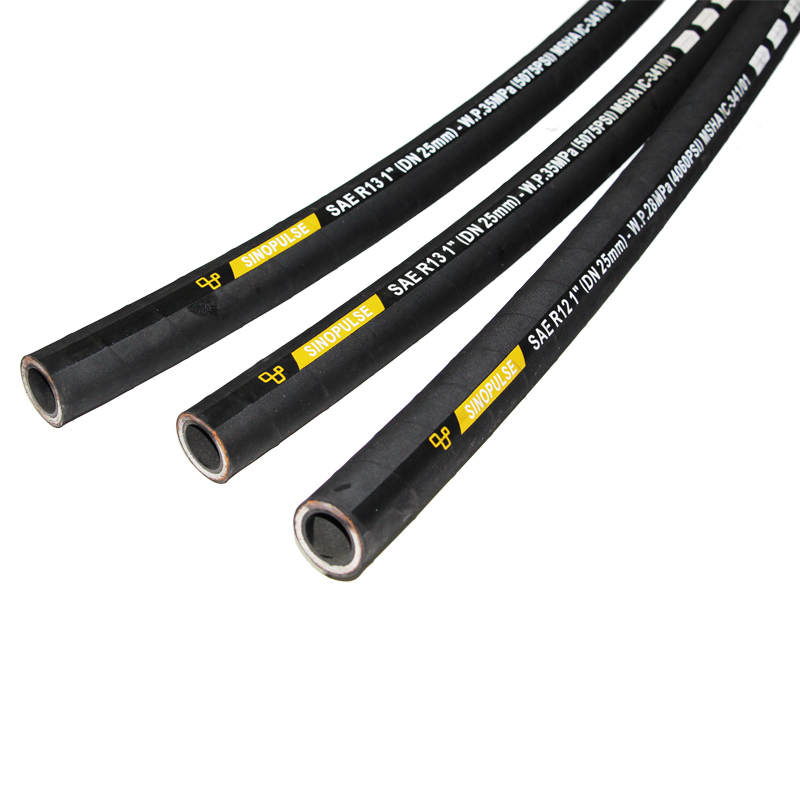
Our Approach to Customization and Engineering Support
As a leading provider of high-pressure hydraulic hose solutions, our approach to customization for the SAE100 R13 hose is centered on collaborative engineering and a deep understanding of our clients' unique operational challenges. We recognize that off-the-shelf solutions may not always suffice for the most demanding applications, and therefore, we offer comprehensive engineering support from the initial concept phase through to production and after-sales service. Our process typically begins with a detailed consultation, where our team of hydraulic engineers works closely with the client to thoroughly understand the specific application, operating conditions (pressure, temperature, fluid type, environmental exposure), space constraints, duty cycle, and required service life. This in-depth analysis allows us to recommend the optimal R13 hose construction, including inner tube and outer cover materials with specialized properties (e.g., enhanced chemical resistance, extreme temperature ratings, superior abrasion resistance), and the appropriate number of steel wire spiral layers for the exact pressure profile. We leverage advanced CAD software for design and simulation, allowing us to model the hose routing, bend radius compliance, and fitting interfaces to ensure a perfect fit and optimal performance within the client's equipment. Our capabilities extend to designing and sourcing specialized fittings, including non-standard sizes, unique thread types, or custom flange configurations, all rigorously tested to ensure compatibility and pressure integrity with the hydraulic hose R13. For prototype development, we offer rapid turnaround times, allowing clients to test and validate the customized assemblies in their real-world applications. Our manufacturing facilities are equipped with state-of-the-art machinery capable of producing these bespoke R13 hose assemblies with the same precision and quality control as our standard products. Each customized assembly undergoes the same stringent testing protocols, including hydrostatic proof tests and impulse cycle tests, to guarantee that it meets or exceeds all specified performance parameters and industry standards like SAE J517. Furthermore, we provide robust documentation, including material certifications, test reports, and detailed specifications for each custom order, ensuring full traceability and compliance. Our commitment to delivering tailored hydraulic hose R13 solutions is backed by years of industry experience, a dedicated R&D team, and a customer-centric approach that ensures our clients receive not just a product, but a reliable, high-performance solution that optimizes their operations and extends the lifespan of their hydraulic systems. This collaborative engineering partnership minimizes risks, reduces development cycles, and ensures that the customized R13 hose seamlessly integrates into and enhances the overall system's efficiency and reliability.
Proven Reliability: Real-World Applications and Success Stories of SAE100 R13 Hoses
Case Study 1: Mining Operations Enhancement
A prominent mining company operating in a challenging underground coal mine faced persistent issues with premature hydraulic hose failures on their continuous miners. The operating environment was characterized by extremely high pressures (up to 4,500 PSI), constant impulse cycles, abrasive coal dust, and varying temperatures. Their existing standard multi-braid hoses were frequently rupturing, leading to unplanned downtime, significant fluid loss, and substantial maintenance costs. The average lifespan of these hoses was only 3-4 months, causing bottlenecks in production. Our engineering team conducted an on-site assessment, identifying that the primary cause of failure was a combination of insufficient impulse resistance, external abrasion, and pressure spikes that exceeded the legacy hoses' design limits. We recommended a complete overhaul of their critical hydraulic lines with SAE100 R13 hoses, specifically tailored with an enhanced abrasion-resistant outer cover. The R13 hose's multi-spiral wire construction was ideal for handling the high and fluctuating pressures, while the custom cover was designed to resist the harsh abrasive contact with rock and coal. We also provided on-site training for their maintenance crew on proper hose routing and installation techniques to minimize bending stress and external wear. Within six months of implementing the hydraulic hose R13 solution across 20 continuous miners, the client reported a dramatic reduction in hose-related failures. The average service life of the hoses increased from 3-4 months to over 18 months, representing a 350-500% improvement. This directly led to a 15% increase in machine uptime for these critical assets, contributing to a significant boost in overall coal production. The reduction in hydraulic fluid consumption due to fewer leaks also resulted in substantial cost savings and a positive environmental impact. Furthermore, the enhanced reliability improved worker safety by minimizing the risks associated with sudden hose bursts in confined underground spaces. This case demonstrates how a strategic upgrade to high-performance R13 hose solutions, coupled with expert technical support, can deliver quantifiable improvements in operational efficiency, cost reduction, and safety in the most demanding industrial environments.
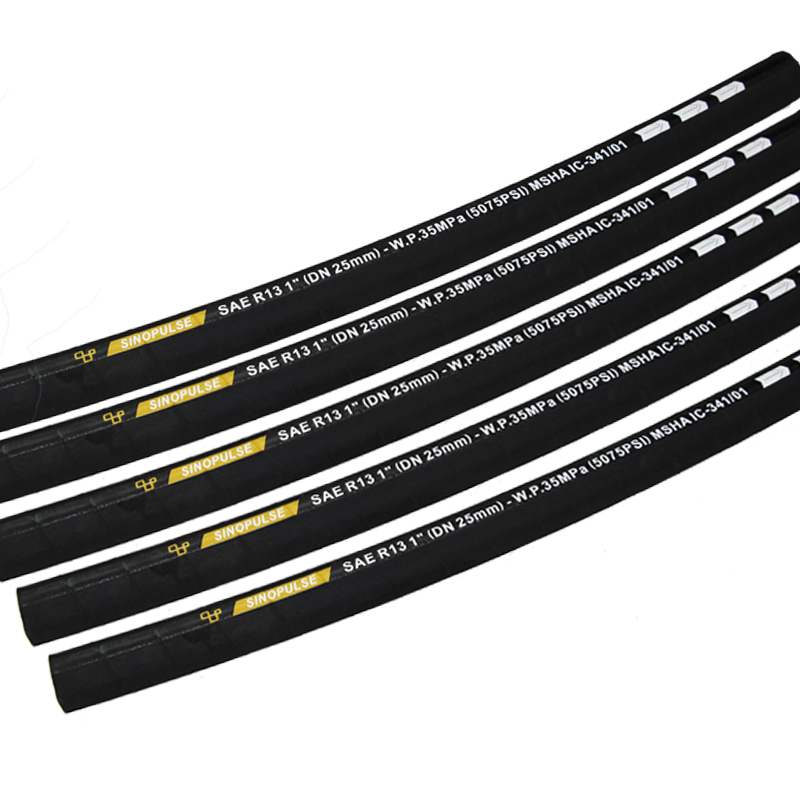
Case Study 2: Offshore Drilling Platform Uptime
An international energy company operating a deep-water offshore drilling platform encountered recurring issues with hydraulic control lines on their Blowout Preventer (BOP) stack. The BOP, a critical safety device, relies on constant, high-pressure hydraulic fluid to operate its shear rams and sealing elements. The existing hoses, while rated for high pressure, were failing due to continuous exposure to corrosive saltwater, extreme underwater pressures, and the constant flexing motion of the platform. Replacing these subsea hoses was an incredibly complex, time-consuming, and expensive operation, requiring specialized remotely operated vehicles (ROVs) and significant platform downtime. The client sought a solution that could guarantee extended service life and unwavering reliability in this exceptionally harsh environment. Our team proposed a custom SAE100 R13 hose assembly, specifically designed for subsea applications. Key features of this customized hydraulic hose R13 included: an inner tube compatible with the specialized control fluids used in BOPs, multi-spiral high-tensile steel wire reinforcement to withstand the immense static and dynamic pressures, and a highly robust, hydrolysis-resistant outer cover formulated to resist saltwater degradation and deep-sea pressures. Furthermore, the hose assemblies were fitted with specialized corrosion-resistant stainless steel fittings, pressure-tested to stringent API (American Petroleum Institute) standards. To ensure long-term integrity, each hose assembly underwent extensive impulse testing beyond standard SAE requirements, simulating the cyclic loading experienced on the BOP stack, and was subjected to external pressure testing to simulate deep-water conditions. Upon installation, the new R13 hose assemblies demonstrated immediate and sustained performance improvements. Over a two-year period, the client reported zero hose-related failures on the BOP control lines, a stark contrast to the previous regimen of multiple replacements annually. This unprecedented reliability translated directly into millions of dollars in avoided downtime costs, as each day of platform inactivity could cost upwards of half a million dollars. The success of this project showcased the critical role of custom-engineered R13 hose solutions in ensuring the safety, operational continuity, and economic viability of high-stakes offshore drilling operations, proving that investing in superior hydraulic components like the R13 hose is an investment in ultimate reliability.
Selecting a Strategic Partner for SAE100 R13 Hydraulic Hose Procurement
Key Considerations in Manufacturer Evaluation
Choosing the right manufacturer or supplier for SAE100 R13 hydraulic hose is a strategic decision that profoundly impacts the reliability, safety, and operational costs of hydraulic systems. It extends far beyond simply comparing price lists. A discerning buyer must evaluate several critical factors to ensure they partner with a supplier who can deliver consistent quality, technical expertise, and robust support. Firstly, certifications and adherence to international standards are paramount. A reputable manufacturer will possess certifications like ISO 9001 for quality management systems and ensure their R13 hose products strictly comply with SAE J517, ISO 18752, and other relevant industry specifications. Requesting documentation, such as material safety data sheets (MSDS), test reports, and compliance certificates for specific batches, is essential. Secondly, manufacturing capabilities and quality control processes are crucial. Inquire about their production facilities, the type of machinery used (e.g., advanced spiral winding equipment, continuous vulcanization lines), and the rigor of their in-house testing procedures. Do they conduct 100% hydrostatic proof testing? What are their impulse testing capabilities? A transparent manufacturer will readily share details about their quality assurance protocols, from raw material inspection to final product verification. Thirdly, technical expertise and engineering support are invaluable, especially for complex or custom applications. A strong partner will have a team of experienced hydraulic engineers who can provide expert guidance on hose selection, system design, problem-solving, and custom solutions for your specific operational challenges. Their ability to understand your unique needs and translate them into optimal hydraulic hose R13 configurations is a key differentiator. Fourthly, product range and customization capabilities are important. While the focus is on R13 hose, a comprehensive product portfolio indicates broader industry knowledge and the ability to provide complementary components. More importantly, inquire about their flexibility in offering customized hose lengths, specialized covers, unique fluid compatibility, or bespoke end fittings. Fifthly, delivery lead times and supply chain reliability are critical for maintaining operational continuity. A dependable supplier will have robust inventory management, efficient logistics, and a proven track record of on-time delivery. Lastly, after-sales support and warranty are indicators of a manufacturer's confidence in their product and commitment to customer satisfaction. Understand their warranty policy for the R13 hose and the availability of technical support for troubleshooting or field issues. By thoroughly evaluating these criteria, businesses can forge enduring partnerships with manufacturers who not only supply high-quality SAE100 R13 hoses but also act as a trusted technical resource, ultimately enhancing operational efficiency and mitigating risks.
| Evaluation Criterion | High-Quality Supplier (Example) | Standard Supplier (Common Pitfalls) |
|---|---|---|
| Certifications & Standards | ISO 9001, SAE J517, ISO 18752, MSHA (if applicable), full traceability via batch codes. | Basic or unverified certifications, limited compliance data, lack of traceability. |
| Manufacturing & QC | Advanced machinery, 100% hydrostatic testing, extensive impulse testing (>500,000 cycles), in-house R&D. | Outdated equipment, minimal testing (batch testing only), reliance on third-party certifications without internal verification. |
| Technical Support | Dedicated engineering team, application specialists, design consultation, troubleshooting support. | Limited technical staff, basic product information only, unable to assist with complex integration. |
| Customization | Ability to customize materials, covers, lengths, fittings for unique applications, rapid prototyping. | Limited customization options, only standard off-the-shelf products, no bespoke solutions. |
| Delivery & Warranty | Reliable lead times, strong inventory, transparent warranty policy, proactive customer service. | Inconsistent delivery, limited stock, vague or restrictive warranty, reactive support. |
Our Commitment to Excellence and Industry Leadership
At Hydraulic Hose Plus, our commitment to providing superior SAE100 R13 Multiple Steel Wire Spiral Hydraulic Hose solutions is deeply embedded in every aspect of our operations. With years of dedicated experience in the hydraulic components industry, we have established ourselves as a trusted partner for B2B clients worldwide, consistently delivering products that meet the highest standards of quality, performance, and reliability. Our adherence to international standards such as SAE J517 and ISO 18752 is not merely a formality; it is a fundamental pillar of our manufacturing process, supported by a rigorous ISO 9001 certified quality management system. Every length of R13 hose leaving our facility undergoes comprehensive internal testing, including 100% hydrostatic proof testing and extensive impulse cycle testing, often exceeding industry minimums to guarantee unparalleled durability under the most extreme conditions. Our state-of-the-art manufacturing facilities leverage the latest advancements in extrusion and spiraling technology, enabling us to achieve precise dimensional accuracy and superior adhesion between layers, which are critical for the long-term integrity of high-pressure hoses. We pride ourselves on our deep technical expertise and proactive engineering support. Our team of seasoned hydraulic specialists works collaboratively with clients, from initial project conceptualization to final implementation, offering expert guidance on hose selection, system design optimization, and custom solutions. Whether it's developing specific material compounds for unique fluid compatibility, designing specialized abrasion-resistant covers, or manufacturing bespoke hose assemblies with custom fittings, our aim is to provide tailored solutions that seamlessly integrate into and enhance the efficiency and safety of your hydraulic systems. Our extensive product portfolio, coupled with a robust global supply chain, ensures reliable and timely delivery of our hydraulic hose R13 products, minimizing your downtime and optimizing your operational continuity. Furthermore, our unwavering dedication to customer satisfaction is underpinned by a transparent warranty policy and readily available after-sales technical support. By choosing Hydraulic Hose Plus, you are not just purchasing a product; you are investing in a strategic partnership with a company committed to delivering cutting-edge hydraulic solutions that enhance your equipment's performance, extend its lifespan, and contribute significantly to your operational success and peace of mind. Our focus on innovation, quality, and customer-centric service positions us as the preferred choice for your most demanding R13 hose requirements.
Ensuring Operational Continuity: Support and Assurance for Your R13 Hydraulic Hose Investment
Frequently Asked Questions (FAQ) About R13 Hoses
- Q: What distinguishes SAE100 R13 from other hydraulic hoses like R1, R2, or 4SP/6SP?
- A: The primary distinction of the SAE100 R13 hose lies in its multiple-spiral wire reinforcement layers (typically 4 or 6, whereas R1/R2 are single/double braid, and 4SP/6SP are spiral but for specific pressures). This spiral construction provides significantly higher pressure ratings (up to 5,000 PSI depending on size) and exceptional impulse resistance (often 500,000 to 1,000,000 cycles), making it suitable for the most severe, high-pressure, and high-impulse applications where other hose types would prematurely fail. Its volumetric expansion under pressure is also minimal, ensuring precise system control.
- Q: What is the typical service life of an R13 hose, and how can it be maximized?
- A: The theoretical service life of an R13 hose can exceed several years (3-5+ years or more in ideal conditions) due to its robust design and high impulse rating. To maximize its lifespan, it is crucial to adhere to proper installation guidelines, including respecting the minimum bend radius and avoiding kinking or twisting. Regularly inspect hoses for abrasion, cuts, cracks, or leaks. Ensure compatibility with the hydraulic fluid used, maintain proper system cleanliness, and operate within the specified pressure and temperature limits. Proactive maintenance and replacement before catastrophic failure are also key.
- Q: How do environmental factors affect R13 hose performance, and what protective measures are available?
- A: Environmental factors like extreme temperatures (both high and low), UV radiation, ozone, abrasion from rough surfaces, and chemical splashes can degrade hose performance over time. R13 hoses are designed with resilient outer covers to combat many of these. For highly abrasive environments, specialized outer covers (e.g., highly abrasion-resistant compounds) or protective sleeves (e.g., spiral wrap, fabric sleeves) can be utilized. In chemically aggressive areas, specific outer cover compounds can be chosen for enhanced resistance. For outdoor use, UV and ozone resistant covers are standard, but additional shrouds can offer further protection.
- Q: What are your delivery timelines for custom R13 hose orders?
- A: Delivery timelines for custom SAE100 R13 hose orders vary depending on the complexity of the customization, material availability, and order volume. For standard custom lengths and fittings, lead times can range from 1-2 weeks. For highly specialized material compounds or unique fitting designs requiring extensive engineering and prototyping, the timeline may extend to 4-6 weeks or more. We prioritize transparent communication and provide clear, realistic lead times at the quotation stage, striving to meet urgent requirements through efficient production planning and strong supply chain management. Please contact our sales team with your specific requirements for a precise estimate.
- Q: What is your warranty policy for SAE100 R13 hoses?
- A: We offer a comprehensive warranty for our SAE100 R13 Multiple Steel Wire Spiral Hydraulic Hoses, covering defects in material and workmanship for a specified period from the date of purchase. Our warranty reflects our confidence in the quality and durability of our products, which are manufactured under stringent quality control protocols and adhere to international standards. Specific warranty terms, including duration and conditions, are detailed in our official product documentation and sales agreements. In the unlikely event of a product issue, our dedicated customer support team is available to assist with evaluation, troubleshooting, and resolution, ensuring your investment is protected. Our goal is to provide peace of mind and unwavering support throughout the lifespan of our hydraulic hose R13 products.
Comprehensive Warranty and Dedicated Customer Support
Beyond delivering technically superior SAE100 R13 hydraulic hose products, our commitment to operational continuity for our clients is reinforced by a robust warranty program and a dedicated customer support framework. We understand that in demanding industrial environments, every minute of downtime translates to significant losses. Therefore, our warranty for the R13 hose covers manufacturing defects in materials and workmanship, providing our clients with the assurance that their investment is protected. The specific terms and duration of the warranty are transparently communicated and are designed to reflect the expected lifespan and rigorous testing standards applied to our high-performance products. Our confidence in the quality and reliability of our hydraulic hose R13 is a direct result of our stringent quality control processes, adherence to international standards like ISO 9001 and SAE J517, and the use of premium raw materials. In addition to our warranty, our customer support is a cornerstone of our service commitment. We operate with a highly responsive and knowledgeable team of technical experts and customer service professionals, available to assist clients with any queries, from product selection and technical specifications to troubleshooting and installation guidance. Whether you require assistance in diagnosing a system issue, understanding specific product features, or expediting an order, our team is equipped to provide timely and effective solutions. We also offer comprehensive documentation, including detailed product catalogs, technical data sheets, installation guides, and safety recommendations, empowering our clients with the information needed for optimal hose management. For large projects or complex OEM integrations, our dedicated project management and field support teams can provide on-site assistance, ensuring seamless integration and optimal performance of our R13 hose solutions. Our goal is to establish long-term partnerships built on trust and mutual success, ensuring that our clients not only receive the highest quality R13 hose products but also benefit from unparalleled support throughout their operational lifecycle, minimizing risks and maximizing uptime.
The Future of High-Pressure Hydraulic Systems: Embracing the Reliability of R13
As industries continue to push the boundaries of performance and efficiency, the demands placed on hydraulic systems will only intensify. Future trends point towards even higher operating pressures, more extreme temperature variations, increasingly aggressive hydraulic fluids, and a greater emphasis on system uptime and predictive maintenance. In this evolving landscape, the SAE100 R13 Multiple Steel Wire Spiral Hydraulic Hose is not merely a current solution but a foundational technology for future innovations. Its inherent robustness, superior pressure and impulse resistance, and adaptability to various environmental conditions position it as a critical enabler for the next generation of heavy machinery, industrial automation, and energy exploration. The ongoing research and development in material science will further enhance the capabilities of R13 hose technology, leading to even lighter, more flexible, and longer-lasting hoses without compromising on pressure ratings. Innovations in outer cover compounds will provide advanced protection against ultra-abrasive environments, chemical permeation, and biological degradation. Furthermore, the integration of smart technologies, such as embedded sensors for real-time pressure monitoring, temperature sensing, and even early detection of hose degradation, will transform hydraulic hose maintenance from reactive to predictive. These advancements will allow operators to proactively replace hoses based on actual usage and condition data, further reducing unplanned downtime and optimizing maintenance schedules. The adoption of R13 hose technology represents a strategic investment in the future of high-pressure hydraulic systems. By choosing this superior class of hydraulic hose, businesses are ensuring their equipment can meet the escalating demands of modern industrial applications, improve safety standards, and significantly reduce operational costs over the long term. The emphasis on engineering excellence, rigorous testing, and continuous improvement in the manufacturing of hydraulic hose R13 directly translates into enhanced reliability and performance, providing a competitive edge in today's fast-paced industrial world. As global industrialization continues, the role of robust and dependable hydraulic components like the R13 hose will become even more pronounced, driving efficiency and sustainability across critical sectors.
References and Further Reading
- SAE International - SAE J517 Hydraulic Hose Standards
- ISO 18752:2014 Rubber hoses and hose assemblies for hydraulic applications — Specification
- NFPA (National Fluid Power Association) - Hydraulic Safety Manual (General Fluid Power Safety Guidelines)
- Rubber & Plastics News - Hydraulic Hose Market Set to See Growth (Industry Trends)
This is the last article
Product Application









